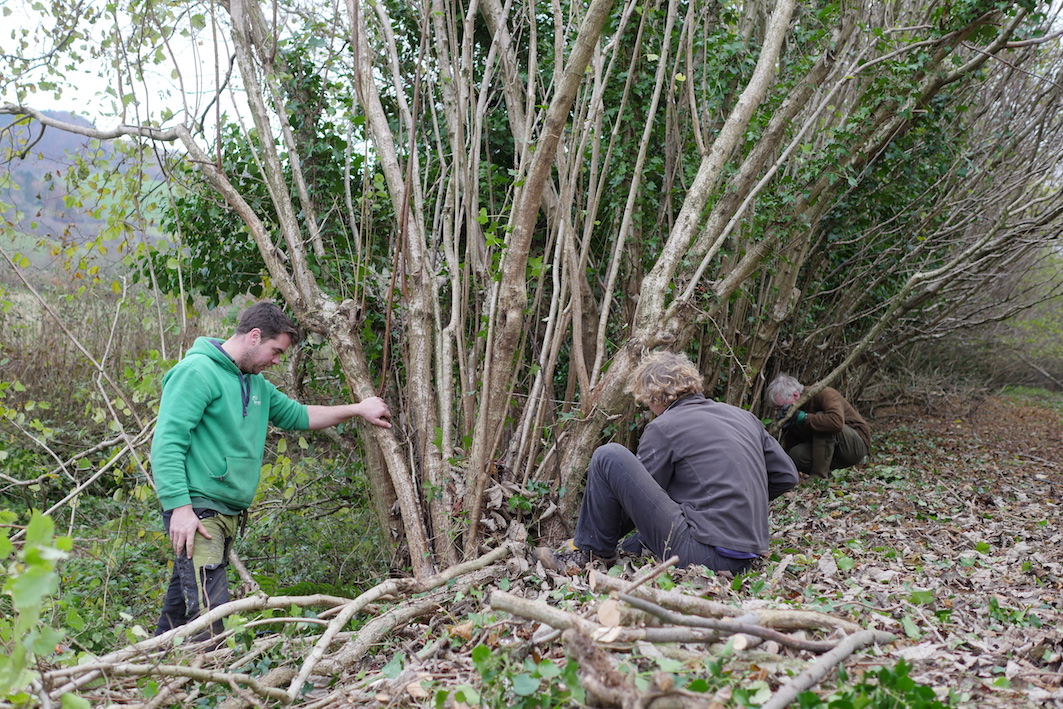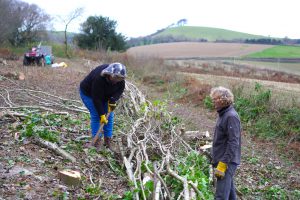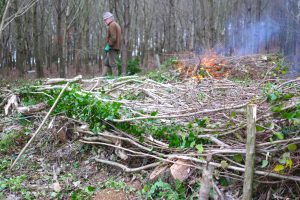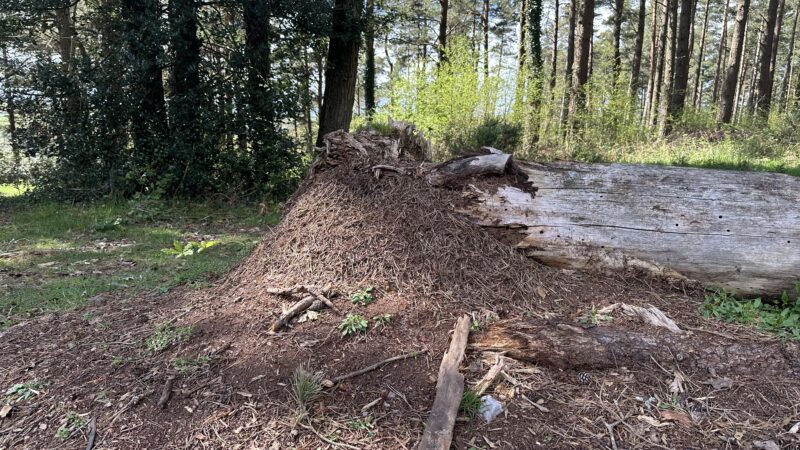Hedgelaying in Stoke Abbott

All the twists and turns of laying a hedge at Little Giant Wood. A piece for the Guardian’s Country Diary column. (You can read the Guardian piece online here.)
Thunk! The billhook bites deep and splits the hazel slantwise. With a heave and a twist on the trunk, the sapling shakes its embryo catkins against the sky and swishes down to lie lengthwise with the others. Then begins the business of trimming the prone tree and weaving it in so it becomes both hedge and living fence.
Hedgelaying is an ancient craft. Small tree trunks are sliced with a shallow, diagonal cut and then bent sideways. A thin bridge of wood remains to connect the laid tree to the live root. The horizontal trees, called pleaches or plashes, are interlaced with each other and held in place with posts and crooks – pieces of forked stick driven into the ground. New side shoots grow outwards and upwards, regenerating the hedge from a thick, stock-proof base.

There are three of us volunteers working alongside Rob Bowditch, a professional woodsman, and Nick Gray from Dorset Wildlife Trust. The hedge we are laying hasn’t been tackled for more than 40 years, only smashed intermittently with a tractor-mounted flail. It’s a straggly mix of hazel, blackthorn, ash, spindle and sycamore, all grown into stunted trees tangled with ivy. We have to chop out the dead wood, fell the thickest trunks and then work with the thinner, wrist-sized pieces. Every limb is a puzzle requiring several decisions – whether to remove or keep and, if keep, how to split and where to interlace.
It’s slow, hard work requiring considerable skill. As a beginner, I can’t match Nick and Rob’s precise violence. Rob wields a roaring chainsaw, sawdust snowflakes fountaining backwards from the blade. Nick chunks wedges of hazel with his billhook, using its weight to add extra directional force. I am less sure of my aim and it takes several, lighter swipes to achieve what he does in one deft blow. The wood frays under my attempts and has to be sawn smooth; rich and buttery as pale cheese in its green rind.
The result looks both neat and brutal: a pile of pinned skeletons. But next spring it will grow back bushy and dense, providing ideal shelter and food for dormice, insects and birds.






